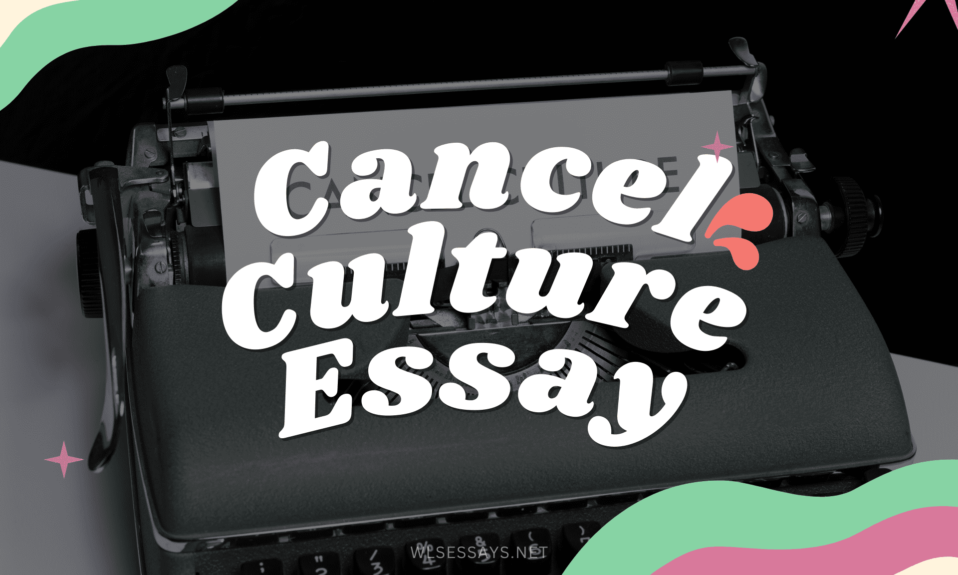“Frankenstein,” one of the greatest writings of all time, is a Gothic novel by Mary Shelley that cautions people against pursuing uncontrolled knowledge. Some underlying themes of human restlessness that appeared earlier almost perfectly followed the novel’s plot. In a literary contest among friends during a stormy summer in Switzerland, the novel came into being, where it goes beyond its origins, exploring timeless themes that continue to resonate with contemporary readers. The story in question revolves around Frankenstein, a Swiss scientist at 18 years old who dreams of scientifically pushing back against death. Frankenstein advises his colleagues to remain focused on what is essential—not losing themselves in some long scientific quest. His creation is the personification of the uncontainable scientific ambition and, in a little twist, inherently monstrous qualities within man’s nature. While many popular culture readings portray the creature as extremely grotesque, Shelley delves into the complexities of human nature and the psychological turmoil accompanying the pursuit of power and knowledge. Shelley delves into further analysis of Frankenstein in detail, beyond the surface, and shows his fascination, madness, and narcissism, contrary to the creature’s humane character. The novel employs literary images and lenses of madness, obsession, and narcissism represented by the man who wanted to defy the natural order.
Fascination and Control
Frankenstein’s passion for control over life and death defines his existence and behavior toward a complete moral and ethical decay. From the moment he succumbs to the thought of being intrigued by following the secrets of life’s creation, Frankenstein entirely steals himself away from normalcy and humanness by any standards. His obsession ignores warnings from family and friends, making him increasingly attracted to playing God. So, in his words, Frankenstein acknowledges the risks of the relentless pursuit of knowledge and scientific ambition. He warns Walton, the explorer to whom he is recounting his story, stating, “Learn from me, if not by my precepts, at least by my example” (Shelley 30). Frankenstein essentially advises Walton to learn from his advice or observe the tragic outcome of his actions. Frankenstein acknowledges that his pursuit of knowledge without limits contributes to his downfall and the suffering of those around him. With a knowledge of what lies in wait, Frankenstein’s ambition propels him forward with experiments that can harm humankind. In this light, his unbending pursuit of scientific advances and his fixation on surpassing the demarcations of life and death reveal the monstrous qualities that define his psyche and characterization as the true villain of Shelley’s narrative.
Madness and Isolation
Frankenstein’s descent into madness relates to self-imposed isolation. These unprecedented outcomes signify his detachment from reality and the ultimate consumption by the darkness in his thoughts. His urge to push the boundaries of scientific knowledge initially propelled him into isolation; his isolation grew with more experiments. Frankenstein loses sight of moral ambiguity and psychological stability. While he intensifies the quest for reanimation by forsaking all the ties and friendships of his family to remain alone in the pursuit of the knowledge of reanimation, his isolation makes him more unstable. He becomes infatuated with self-glorification, forgetting all his ethics and morality. Frankenstein’s detachment from reality is apparent since he cannot understand the implications of his experiments, which confirms the partial loss of vision and sanity. He says, “But I, the true murderer, felt the never-dying worm alive in my bosom, which allowed of no hope or consolation” (Shelley 53). This admission signifies guilt and self-awareness, indicating the depth of Frankenstein’s psychological agonies as he, in deference, struggles with the moral implications of his deeds and the toll they have taken on his sanity. Although Victor acknowledges his fault, his madness excuses him from seeking forgiveness or expiation, further embellishing his traits as a true monster within Shelley’s story.
Narcissism and Vanity
Frankenstein portrays narcissism and vanity attributed to his actions and subsequent downfall. From the beginning, Frankenstein’s sense of superiority and self-importance drive him to take scientific knowledge beyond ethical responsibility. His belief in his intellectual abilities obscures his view of the potential consequences of his experiments; he continues pursuing glory and recognition. Victor’s refusal to take responsibility for his fallibility is evident through how he frequently shifts the blame onto external factors, overlooking responsibility for his actions. The narcissistic nature of this formulation is presented in Frankenstein’s altercation with the creature, as he says, “Begone, vile insect! Or rather, stay, that I may trample you to dust…!” (Shelley 58). His refusal to consider the creature as an equal depicts narcissistic strain and his inability to empathize with the suffering that he has caused. Furthermore, Frankenstein’s vanity is evident in his continued pursuit of scientific progress despite the warnings and mounting evidence of the perils lurking behind his experiments. His belief in his abilities closes his eyes to the ethical implications of his actions and primarily drives him to unrealistic ambitions. Even after a tragedy and loss, Frankenstein pursues knowledge, unable to realize the harm and the limits of his power. Thus, Victor’s narcissism and self-importance show the consequences of rash pursuits and the calamitous consequences of losing perspective about what it means to be human.
The Creature’s Humanity
Despite its deformed appearance and circumstances, the creature demonstrates more human traits than Frankenstein. Its creature reveals an inherent capacity for compassion, companionship, and acceptance. In the narrative, the creature becomes a tragic figure, rejected by society, and denied even the basic human connection. Unsurprisingly, when dealing with humans, his interactions are more likely to result in isolation and otherness, as he faces each with fear, disgust, and violence. However, despite being a wretched monster, he continues demonstrating morality and the desire for understanding. He reflects on his creator’s wrath, saying, “… You, my creator, abhor me; what hope can I gather from your fellow creatures, who owe me nothing?” (Shelley 59). In such moments of introspection, the creature reveals his innermost thoughts and desires, which show the innate human aspect within him. Throughout the novel, Shelley underlines the creature’s human actions in making his existence and forging meaningful relationships with others. Despite the injustices he has suffered, the creature displays the capacity to empathize and show compassion in his dealings with the De Lacey family and, eventually, his request for Frankenstein to create a friend for him. Unlike Frankenstein’s self-centeredness and inhumanity, the creature yearns for connection and understanding; in him lies the qualities that he lacks.
Descent into Mental Breakdown
Frankenstein portrays monster characters and madness through the descent into a mental breakdown. He withdraws from society and becomes an outcast. In this respect, his isolation creates an attitude of profound loneliness and despair. Frankenstein affirms his isolation and madness, saying, “I felt as if I were placed under a ban—as if I had no right to claim their sympathies…” (Shelley 85). His admission reveals the profound loneliness and lack of sympathy he faces from those around him since all his life revolves around experiments and experiments. Frankenstein’s isolation draws him more into the depth of madness since he retreats increasingly from reality and surrenders entirely to his thoughts and desires. His words indicate this: “I seemed to have lost all soul or sensation but for this one pursuit” (Shelley 31). He sinks into a purring study, imposing himself deeply and losing his other self from the relentless pursuit of scientific quests. These quotes signify Frankenstein’s descent into madness, emphasizing that all his scientific ambitions precede anything else. Withdrawing from social activities and isolating himself to pursue scientific experiments portrays Frankenstein’s monster character and madness that leads to a mental breakdown.
Destruction and Betrayal
Frankenstein’s downfall signifies the epitome of his madness, obsession, and narcissism. The pernicious thirst for advancement in science obscures the warnings from people around him. Finally, the great madness breaks in, ruining his family, siblings, and friends. The consequences of his creation are catastrophic; even his birth brings horror and chaos upon anyone unfortunate enough to come across it. Despite the awareness, selfishness, and vanity contribute to the wreckage of his life. He exemplified this in his confession: “I had desired it with an ardour that far exceeded moderation… ” (Shelley 33). This feeling can be summarized as an example of how badly Frankenstein recognizes the consequences of his quest. His narcissism remains an unsurmountable hindrance to an honest acknowledgment of his responsibility. Accordingly, Shelley’s story shows how the reckless pursuit of progress is dangerous and how the devastating consequence of tampering with nature unfolds through man’s blindness. This is how Shelley’s narrative amplifies the perils of boundless ambition and the holistic influence of human foibles over one’s life and society.
Conclusion
Shelley’s Frankenstein seeks to depict a source-reflective and thematic examination of the complexities of human life, bringing forth subjects of madness, mania, narcissism, and destruction, which convert humans from the target into the executive subject. Frankenstein is the main medium through which Shelley shares a story of caution about what man can get into if he crosses the boundaries and loses his humanity. This perspective is evident through Victor’s descent into madness, his mad rush toward scientific advancement, and his eventual narcissism. Though it is popular prejudice to view the creature as a personification of evil, Shelley allows readers to contemplate the atrocity in Frankenstein. In Shelley’s eyes, Frankenstein emerges as a monster, avoiding responsibility for his actions, relentless quest for fame and recognition, and willing to do whatever it takes to advance his scientific position. Consequently, Frankenstein’s withdrawal from social activities and isolation to pursue scientific experiments portrays his monster character and madness that leads to a mental breakdown. Further, Shelley focuses on the creature as a pitiable character to explore the complexities of human nature to change one’s view of it. Through the creature’s experiences, Shelley highlights his inherent humanity, unlike Frankenstein’s self-centeredness and pride. Ending this theme of Frankenstein, Shelley warns about the dangers of unchecked ambition and that one must give his humanity for glory.
Work Cited
Shelley, Mary. Frankenstein. Peter Bedrick Books, 1989.










